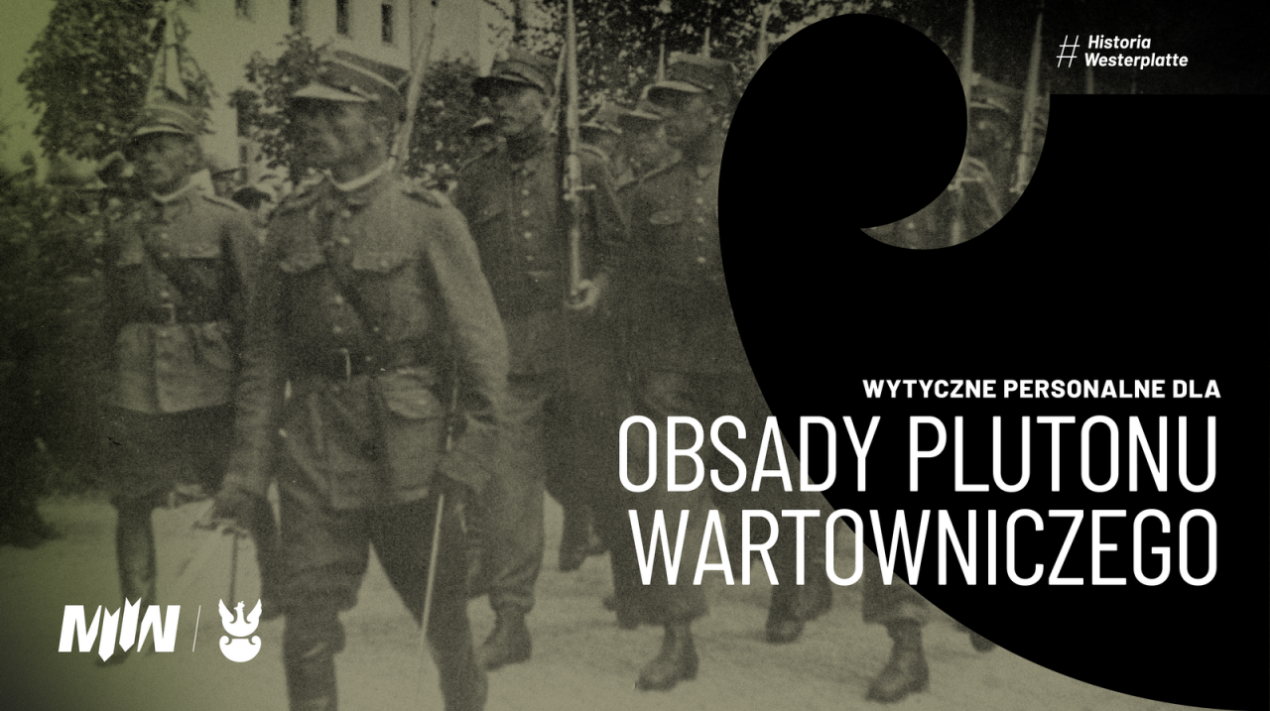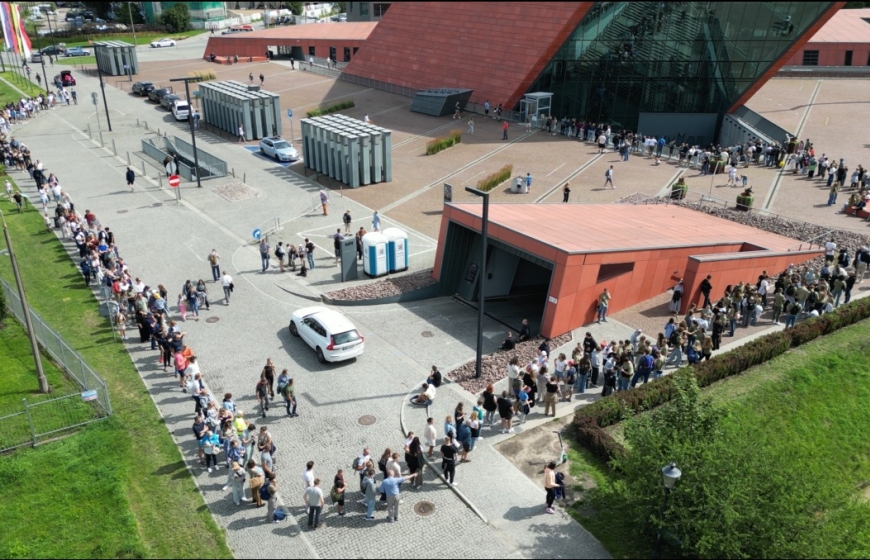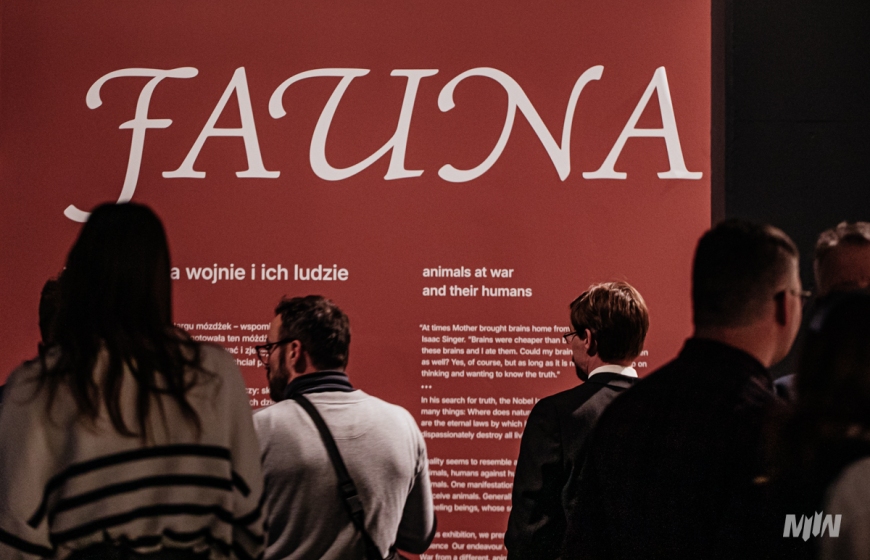#WesterplatteHistory - Personnel Guidelines for the Guard Platoon
The outbreak of World War II in the spring of 1939 led to the arrival of a new guard platoon, deployed by the 2nd Infantry Division of the Legions. This platoon would become the last officially stationed on the grounds of the Military Transit Depot on Westerplatte (MTD). This marked the end of a continuous presence of over thirteen years of guard units on this territory. Due to escalating tensions between Warsaw and Berlin, and the increasing unrest and illegal militarization by the German side in the Free City of Gdańsk, the General Staff, in the spring of 1939, changed the organization of the guard platoon assigned to the MTD. Let's take a look at the personnel guidelines given to the soldiers of the Polish Army delegated to Gdańsk at that time.
The professional staff of the newly arrived platoon was to consist of 14 officers and non-commissioned officers selected from the regiments of the 2nd Legion Infantry Division. All professional non-commissioned officers were to come from the so-called line group, and both the platoon and corporals were to specialize in the handling of heavy machine guns (HMG). The core of the platoon was to be made up of non-commissioned officers and privates with basic military service, preferably after completing a non-commissioned officer school and passing a specialization course. This meant that only soldiers with at least a year's service in their parent military unit could be assigned to Westerplatte. From the conscripts drafted in the spring of 1938 to the 4th Legion Infantry Regiment, the best were selected. It was from among them that the guard platoon on Westerplatte was formed, using the following key:
- 20 machine gunners,
- 20 machine gunners with optical sights,
- 4 infantry support gunners,
- 5 infantry support gunners with optical sights,
- 7 infantry support gun crew members,
- 3 telephonists,
- 4 pioneers (sappers),
- 1 medic (who also served as a barber – if it was possible to find such a soldier in the regiment),
- 1 bugler,
- 1 cook;
A total of 66 soldiers.

The personnel guidelines indicated that the officer appointed as the platoon commander should be a bachelor with very good professional as well as moral qualifications. Second Lieutenant Leon Pająk, who was appointed to this position, met these requirements. However, during his service on Westerplatte, he obtained permission to marry, which he did just before the outbreak of the war on July 30th, 1939.
Non-commissioned officers were also to be bachelors, but a certain percentage of married men were allowed. This was because they were selected from older, more experienced instructors from non-commissioned officer schools in their respective regiments. These soldiers also had to have very good professional and moral qualifications, be of Polish nationality, have no criminal or disciplinary record for offenses against military discipline and loyalty, be free from addictions and debts, and adhere to military secrecy. As stated in the order, they were also required to have a "good presentation."
Privates of the guard platoon at MTD could only be soldiers with no prior criminal record, politically reliable, of Polish nationality from central or southeast voivodeships, at least 170 cm tall, and with at least one military specialization in infantry weapons.
The order from the Ministry of Military Affairs of the Infantry Department also emphasized that due to the nature of the service, the assignment to the guard platoon at Westerplatte should be treated as a special honor. This is how the selected officers, non-commissioned officers, and the privates heading to Gdańsk perceived it. The order also noted that, for the duration of the entire six-month service, no leaves were anticipated for this reason.
In the later part of the order, details regarding uniforms, weapons, and equipment that soldiers were to be equipped with were outlined:
- Professional staff: field uniforms and field equipment, complete (excluding helmets).
- Non-commissioned officers and conscripts will be equipped by their parent unit with the following items:
• Dress uniform
• Cap
• Overcoat.
• Main belt
• Jacket
• Trousers
• Boots
• Leg wraps
• Underwear
• Travel bag
- Non-commissioned officers and conscripts with basic military service will leave their parent units without weapons.
- The uniforms of non-commissioned officers and conscripts with basic military service will be deposited at the Military Transit Depot (MTD), where they will receive uniforms, weapons, and equipment through the efforts of the MTD.
The order approving the organization of the guard platoon was issued on March 10th, 1939, by the commander of the 2nd Legion Infantry Division in Kielce, Colonel Jan Edward Dojan-Surówka. The order listed by name all the officers and non-commissioned officers who would serve on Westerplatte. The previously established schedules of work and activities for the staff were left intact. However, time was allocated for the planned expansion of the defensive system at the MTD. Soldiers were acquainted with regulations and instructions regarding the types of weapons used on Westerplatte, as well as specific methods of fighting and defense as part of the Polish Army infantry.
The unique circumstances in which the spring changeover took place, including the occupation of the Klaipeda region in Lithuania by the Germans, meant that the entire process extended until the beginning of April 1939. The newly arrived soldiers were practically informed on the spot about the special defensive solutions applied at MTD. Guard duty, especially during the autumn-winter months, was exceptionally difficult and demanding. Additionally, the increasingly negative attitude of public opinion, with the majority supporting the revisionist approach of Nazi Germany in Gdańsk, made Westerplatte increasingly appear as an island in a sea of German National Socialist ideology.















